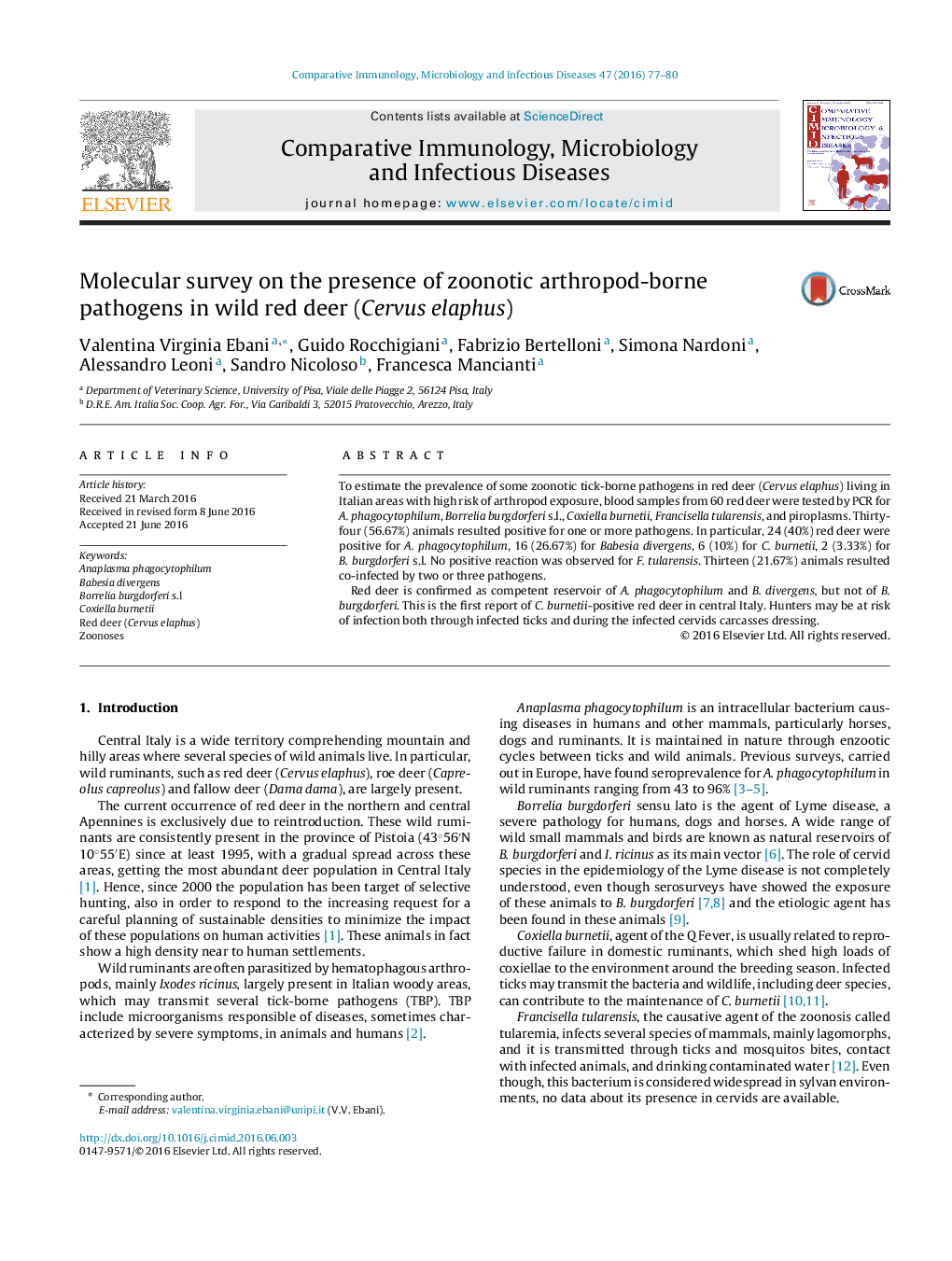| Article ID | Journal | Published Year | Pages | File Type |
|---|---|---|---|---|
| 2428132 | Comparative Immunology, Microbiology and Infectious Diseases | 2016 | 4 Pages |
•The role of red deer in the tick-borne pathogens epidemiology is not fully understood.•Red deer are competent reservoirs of A. phagocytophilum and B. divergens.•These animals can act as source of infection for ticks, presenting a zoonotic hazard.•The first detection of C. burnetii in red deer in Italy.•Hunters are at risk of infection manipulating C. burnetii—infected red deer.
To estimate the prevalence of some zoonotic tick-borne pathogens in red deer (Cervus elaphus) living in Italian areas with high risk of arthropod exposure, blood samples from 60 red deer were tested by PCR for A. phagocytophilum, Borrelia burgdorferi s.l., Coxiella burnetii, Francisella tularensis, and piroplasms. Thirty-four (56.67%) animals resulted positive for one or more pathogens. In particular, 24 (40%) red deer were positive for A. phagocytophilum, 16 (26.67%) for Babesia divergens, 6 (10%) for C. burnetii, 2 (3.33%) for B. burgdorferi s.l. No positive reaction was observed for F. tularensis. Thirteen (21.67%) animals resulted co-infected by two or three pathogens.Red deer is confirmed as competent reservoir of A. phagocytophilum and B. divergens, but not of B. burgdorferi. This is the first report of C. burnetii-positive red deer in central Italy. Hunters may be at risk of infection both through infected ticks and during the infected cervids carcasses dressing.
